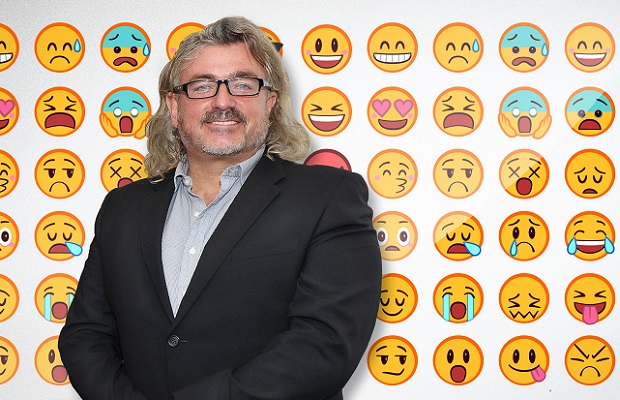Nicholas Mann, owner and managing director of Interdirect gives us his take on the colourful little characters that seem to be leading the way in the future of emotional expression in digital communication.
A portmanteau of English words: “emote” and “icon”, the word emoticon was coined to describe the pictograms so often used as shorthand for expressing emotions in written English. Emoticons are constructed from punctuation marks that are deliberately sequenced so as to depict facial expressions turned onto their sides. The evolution of these pictograms is debated, however, there are confirmed uses dating back as far as the 19th Century (Puck) and even a suggestion that one of Abraham Lincoln’s 1862 speeches contained one (New York Times).
Whatever the truth, more contemporaneously it is commonly accepted that usage in digital communications, dates back to September 1982, when Scott Fahlman of Carnegie Melon University specifically proposed the use of 🙂 and 🙁 to convey emotions. What I know for a fact is that when I first started to use the internet exactly ten years’ later, emoticons were already a global meme.
But that was back in the dark days, when all things internet and mobile phone were text-based only; so the ability to convey emotions in shorthand built only from ASCII characters was (then) considered very cool. How easily we were impressed! As we know all too well however, technology and tide wait for no man, so it wasn’t long before we all started to move towards more enriched graphical user experiences. Unsurprisingly, popular culture kept apace, retiring the tired and trite emoticon in favour of the new kid on the block, made possible by high resolution screens. This, of course, was the emoji.
The word emoji is Japanese and means “picture character”, which explains why there is such an obvious Japanese theme to many of the pictograms. It is however, purely coincidental though that the word also sounds like the English word: emotion.
It is often said that a picture paints a thousand words and while in face-to-face communication, it is easy to infer emotion through body-language, facial expressions and the intonation in a person’s voice, it would be much harder to do so in text-based communications, without pictograms such as emojis and emoticons.
With the ability to express emotions without having to spell out feelings, it is easy to see why pictograms have become so popular; and in their latest incarnation, the emoji, the gamut of icons now available means that almost any conceivable emotion can be represented by its stylised pictorial equivalent.
Fuelled by the Developed World’s (almost) ubiquitous adoption of smartphones, the rise of the all-conquering emoji has been dramatic and total; and, as if to demonstrate the point, in November 2015, the Oxford English Dictionary announced that its Word of the Year, wasn’t a word at all! It was in fact an emoji! (The “Face with Tears of Joy” emoji.)
It is subjective whether this is heresy or just a modern language growing and adapting as its users’ dictate; and I’ve read opinions from both sides. Regardless, the OED’s decision has made me wonder if, we as a global society, are becoming so immersed in the cultural use of emojis, that our emotional responses to stimuli are not only being expressed by an emojis, but also have started to be interpreted by them too?
For example, when hearing of somebody being happy, instead of us making connections in our heads that help us to visualise happiness, do we instead start to think of the happiness emoji? I have heard of people that have said that they do exactly this.
This might sound like a leap, but actually, there are many precedents for precisely this in the world already. Afterall, both Japanese and Chinese are languages that rely heavily on character based words. So all that’s different with emojis is that they look like the things that they describe. Is this, I wonder, the pictogram equivalent of onomatopoeia?
Throughout my 24-year career as an internet entrepreneur, I have naturally become accustomed to the coming and going of technologies, memes and the seismic shifts in our culture, all facilitated by the advent and metamorphosis of the internet, so I’m loathed to condemn the emojis, as others have. But, I’m intrigued as to where it’ll take us.
Perhaps our language is slowly but surely developing towards being more like Japanese and Chinese languages. Perhaps we can start to expect to see poetry, and even books, written entirely in emojis? Perhaps, due to their global recognition, emojis will develop into the human race’s first, truly global lingua franca? Whatever the outcome, I for one, shall be watching with interest.
By Nicholas Mann
Managing Director
Interdirect
